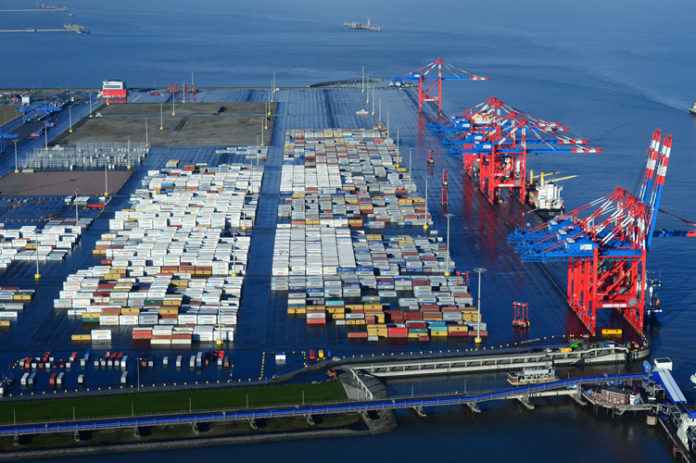
In its latest Review of Maritime Transport[ds_preview], United Nations body UNCTAD says that seaborne trade is still growing. However, problems like the ship size development and the uncertainty of the future are stressed, too.
Seaborne shipments passed 10 billion tons for the first time ever in 2015, up 2.1 % from 9.8 billion tons the year before, it is said, noting that this is the slowest pace of growth in the industry since 2009. Despite this slow growth, UNCTAD reports that the industry’s carrying capacity continued to grow, jumping 3.5 % to 1.8 billion deadweight tons in 2015 and pushing freight rates down to record lows.
»With global trade growing at its slowest pace since the financial crisis, the immediate outlook for the shipping industry remains uncertain and subject to downside risks,« UNCTAD Secretary-General Mukhisa Kituyi said. For him, the push for ever larger ships is at the root of the industry’s problems. Falling demand from China, low commodity prices, over supply of ships and geopolitical uncertainties in some oil and gas producing countries would all add to the current downside risks affecting shipping.
»Shipping companies have sought to reduce their operating costs by building and buying ever larger ships. But this may prove costly for developing countries, where transport costs are already higher than in other regions. With larger ships, total system costs go up, and smaller trading nations are increasingly confronted with oligopolistic liner markets«, the report adds. Developing countries account for ever larger shares of international shipping. By volume, they accounted for 60 per cent of the goods loaded onto ships in 2015. In the same year, their share of goods unloaded was 62 per cent, up from 41 per cent in 2006.
UNCTAD says, with the exception of a few Asian countries such as China, most developing country ports lack the infrastructure for bigger ships. »So unless they spend heavily on upgrading their ports, developing countries face fewer port calls, less competitive markets and higher shipping costs.« Nonetheless, thanks to population growth, and the potential maritime trade and business opportunities that may be generated by new transport infrastructure projects such as the extension of the Panama Canal and Suez Canal, the long-term prospects for shipping would remain positive. The report urges developing countries to identify possible comparative advantages in sectors such as shipbuilding, registration and staffing, and to benefit from them.
»With all the bad news in the media about the state of the shipping industry, we forget that seaborne trade continues to grow, offering job and growth opportunities for developing countries,« says Shamika N. Sirimanne, Director of the UNCTAD Division on Technology and Logistics. She added that many industries and businesses in developing countries could be much more competitive if their ports were more efficient and that delays in African ports add roughly 10 per cent to the cost of imported goods and even more to exports.


















